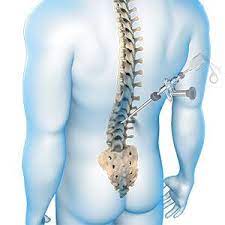
Back surgery: When is it a good idea?
Low back pain is one of the most common reasons people see a health care provider. Find out what can cause back pain and whether surgery might help.
Back surgery can help ease some causes of back pain, but it’s rarely necessary. Most back pain gets better on its own within three months.
Low back pain is one of the most common reasons people see a health care provider. Common treatments may include anti-inflammatory medicines, heat or ice, and physical therapy.
Do you need back surgery?
Back surgery might be an option if other treatments haven’t worked, and your pain is disabling.
Many people with back pain also have pain that goes down a leg. These symptoms are often caused by pinched nerves in the spine. Nerves may become pinched for a variety of reasons, including:
- Disk problems. Disks are the rubbery cushions that separate the bones of your spine. A bulging or herniated disk can sometimes get too close to a spinal nerve. This can cause pain and affect how the nerve works.
- Overgrowth of bone. Osteoarthritis can result in bone growths, often called spurs, on your spine. This excess bone can reduce the amount of space available for nerves to pass through openings in your spine.
Back surgery relieves this leg pain better than it does back pain. Many people who have back surgery continue to have pain in their backs.
It can be very difficult to pinpoint the exact cause of back pain, even if imaging tests show disk problems or bone spurs. Imaging tests taken for other reasons often reveal bulging or herniated disks that cause no symptoms and need no treatment.
Types of back surgery
Different types of back surgery include:
- Diskectomy. This procedure removes the herniated portion of a disk.
- Laminectomy. This procedure removes bone at the back of the spine to make more room for the spinal cord and nerves.
- Fusion. Spinal fusion removes the arthritic joints and often uses metal implants to help permanently connect two or more bones in the spine.
- Artificial disks. These devices are made of plastic and metal. They can replace the damaged cushion between two spinal bones.
What are the major differences between traditional spine surgery and minimally invasive spine surgery?
Traditional open spine surgery involves the complete exposure of the anatomy. In minimally invasive spine surgery we surgically expose less of the anatomy which means, in many cases, an earlier recovery in the first few weeks after surgery. In minimally invasive spine surgery, we often use additional surgical aids, such as intraoperative spinal navigation. This provides the surgeon greater visibility into surgical areas with limited exposure.
Whether minimally invasive or traditional, the goals are the same for the long-term; we want to accomplish overall improvement in symptoms or a halt in degeneration. Ultimately, we want our procedures to result in less blood loss, shorter hospital stays, lower infection rates and faster recovery in the weeks following surgery. Minimally invasive surgery typically results in an easier recovery process for patients, however, not every patient or surgical condition is appropriate for minimally invasive surgery. It is important that you partner with your spine surgeon to identify the best treatment option for your condition.
Surgery is a controlled trauma. Therefore, we aim to maximize the benefit for the patient while minimizing the trauma of surgery as much as possible. We implement leading surgical techniques and technology as appropriate, and our patients benefit from our surgeons’ academic research to further both minimally invasive and complex spine surgery procedures.
